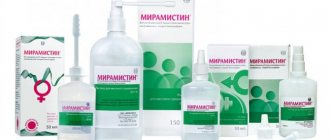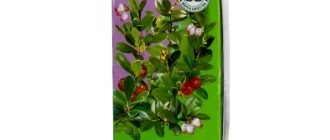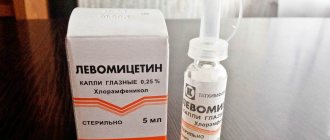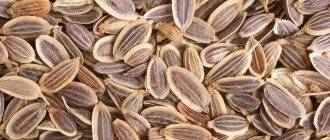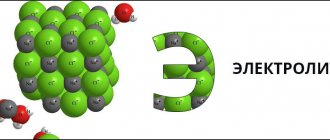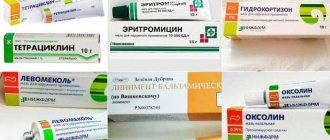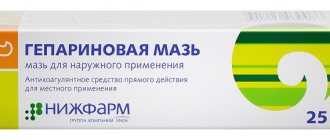Nosological classification (ICD-10)
- A53.9 Syphilis, unspecified
- A54 Gonococcal infection
- A56 Other chlamydial sexually transmitted diseases
- A59 Trichomoniasis
- A60 Anogenital herpetic viral infection [herpes simplex]
- B35.3 Mycosis of the feet
- B36.9 Superficial mycosis, unspecified
- B37.0 Candidal stomatitis
- B37.2 Candidiasis of the skin and nails
- B37.3 Candidiasis of the vulva and vagina (N77.1*)
- B37.4 Candidiasis of other urogenital sites
- H60.8 Other external otitis
- J01 Acute sinusitis
- J02.9 Acute pharyngitis, unspecified
- J03.9 Acute tonsillitis, unspecified (angina agranulocytic)
- J04.0 Acute laryngitis
- J31.2 Chronic pharyngitis
- J32.0 Chronic maxillary sinusitis
- J35.0 Chronic tonsillitis
- J37.0 Chronic laryngitis
- K05.6 Periodontal disease, unspecified
- K12 Stomatitis and related lesions
- N34.1 Nonspecific urethritis
- N41.9 Inflammatory disease of the prostate, unspecified
- N71 Inflammatory diseases of the uterus, except the cervix
- N76 Other inflammatory diseases of the vagina and vulva
- O86.1 Other genital tract infections after childbirth
- P15.9 Birth injury, unspecified
- T30 Thermal and chemical burns of unspecified location
- T79.3 Post-traumatic wound infection, not elsewhere classified
- Z100* CLASS XXII Surgical practice
- Z97.2 Presence of dental prosthetic device (complete) (partial)
Pharmacodynamics
Miramistin® has a wide spectrum of antimicrobial action, including hospital strains resistant to antibiotics.
The drug has a pronounced bactericidal effect against gram-positive (Staphylococcus spp., Streptococcus spp., Streptococcus pneumoniae, etc.), gram-negative (Pseudomonas aeruginosa, Escherichia coli, Klebsiella spp., etc.), aerobic and anaerobic bacteria, determined in the form of monocultures and microbial associations, including hospital strains with multiresistance to antibiotics.
It has an antifungal effect on ascomycetes of the genus Aspergillus and the genus Penicillium, yeast (Rhodotorula rubra, Torulopsis glabrata, etc.) and yeast-like fungi (Candida albicans, Candida tropicalis, Candida krusei, Pityrosporum orbiculare (Malassezia furfur), etc.), dermatophytes (Trichophyton rubrum, Trichophyton mentagrophytes, Trichophyton verrucosum, Trichophyton schoenleini, Trichophyton violacent, Epidermophyton Kaufman-Wolf, Epidermophyton floccosum, Microsporum gypseum, Microsporum canis, etc.), as well as other pathogenic fungi in the form of monocultures and microbial associations, including fungal microflora with resistance to chemotherapy drugs.
It has an antiviral effect and is active against complex viruses (herpes viruses, human immunodeficiency virus, etc.).
Miramistin® acts on pathogens of sexually transmitted diseases (Chlamydia spp., Treponema spp., Trichomonas vaginalis, Neisseria gonorrhoeae, etc.).
Effectively prevents infection of wounds and burns. Activates regeneration processes. Stimulates protective reactions at the site of application due to the activation of the absorption and digestive functions of phagocytes, potentiates the activity of the monocyte-macrophage system. It has pronounced hyperosmolar activity, as a result of which it stops wound and perifocal inflammation, absorbs purulent exudate, promoting the formation of a dry scab. Does not damage granulations and viable skin cells, does not inhibit marginal epithelialization.
Does not have a local irritant effect or allergenic properties.
Miramistin 500 ml
An economical bottle, suitable for manipulations that require a large amount of the drug, as well as for use in hospitals and dressings.
Miramistin® has a wide spectrum of antimicrobial action, including hospital strains resistant to antibiotics. Increases the sensitivity of bacteria, fungi and protozoa to the action of antibiotics. Stimulates local protective reactions at the site of inflammation. The drug is not absorbed and does not have a local irritant or allergenic effect. ‹ Modern antiseptics: rebirth Up Miramistin - instructions for use ›
Indications of the drug Miramistin®
Surgery, traumatology: prevention of suppuration and treatment of purulent wounds. Treatment of purulent-inflammatory processes of the musculoskeletal system.
Obstetrics, gynecology: prevention and treatment of suppuration of postpartum injuries, wounds of the perineum and vagina, postpartum infections, inflammatory diseases (vulvovaginitis, endometritis).
Combustiology: treatment of superficial and deep burns of II and IIIA degrees, preparation of burn wounds for dermatoplasty.
Dermatology, venereology: treatment and prevention of pyoderma and dermatomycosis, candidiasis of the skin and mucous membranes, mycoses of the feet.
Individual prevention of sexually transmitted diseases (including syphilis, gonorrhea, chlamydia, trichomoniasis, genital herpes, genital candidiasis).
Urology: complex treatment of acute and chronic urethritis and urethroprostatitis of specific (chlamydia, trichomoniasis, gonorrhea) and nonspecific nature.
Dentistry: treatment and prevention of infectious and inflammatory diseases of the oral cavity: stomatitis, gingivitis, periodontitis, periodontitis. Hygienic treatment of removable dentures.
Otorhinolaryngology: complex treatment of acute and chronic otitis, sinusitis, tonsillitis, laryngitis, pharyngitis.
In children aged 3 to 14 years, it is used for the complex treatment of acute pharyngitis and/or exacerbation of chronic tonsillitis.
Buy Miramistin local solution. with spray 150ml in pharmacies
Instructions for use Miramistin local solution. (with spray) 150ml
Dosage forms solution 0.01%
Synonyms Okomistin Group Antiseptics International nonproprietary name Benzyldimethyl-myristoylamino-propylammonium Composition Active substance: benzyldimethyl[3-myristoylamino)propyl] ammonium chloride, monohydrate (miramistin, in terms of anhydrous substance) - 0.1 g. Manufacturers Infamed (Russia) Pharmacological action Miramistin has a pronounced bactericidal effect against gram-positive and gram-negative, aerobic and anaerobic bacteria in the form of monocultures and microbial associations, including hospital strains with multidrug resistance to antibiotics. The drug is more effective against gram-positive bacteria (Staphylococcus spp., Streptococcus spp., Streptococcus pneumoniae, etc.), acts on pathogens of sexually transmitted diseases (Chlamydia spp., Treponema spp., Trichomonas vaginalis, Neisseria gonorrhoeae), as well as herpes viruses, human immunodeficiency, etc. Has an antifungal effect on ascomycetes of the genus Aspergillus and the genus Penicillium, yeast fungi (Rhodotorula rubra, Torulopsis gabrata, etc.) and yeast-like fungi (Candida albicans, Candida tropicalis, Candida krusei, etc.) , dermatophytes (Trichophyton rubrum, Trichophyton mentagrophytes, Trichophyton verrucosum, Trichophyton schoenleini, Trichophyton violacent, Epidermophyton Kaufman-Wolf, Epidermophyton floccosum, Microsporum gypseum, Microsporum canis, etc.), as well as other pathogenic fungi, for example, Pityrosporum orbiculare ( Malassezia furfur), in the form of monocultures and microbial associations, including fungal microflora with resistance to chemotherapeutic drugs. Effectively prevents infection of wounds and burns, activates regeneration processes. It has pronounced hyperosmolar activity, as a result of which it stops wound and perifocal inflammation, absorbs purulent exudate, promoting the formation of a dry scab. Does not damage granulations and viable skin cells, does not inhibit marginal epithelialization. Does not have a local irritant effect or allergenic properties. Pharmacokinetics. When applied topically, Miramistin does not have the ability to be absorbed through the skin and mucous membranes. Side effects In some cases, a slight burning sensation may occur at the site of application, which goes away on its own after 15 - 20 seconds and does not require discontinuation of the drug. Allergic reactions. Indications for use Surgery, traumatology: prevention of suppuration and treatment of purulent wounds; treatment of purulent-inflammatory processes of the musculoskeletal system. Obstetrics, gynecology: prevention and treatment of suppuration of postpartum injuries, wounds of the perineum and vagina, postpartum infections; inflammatory diseases (vulvovaginitis, endometritis). Combustiology: treatment of superficial and deep burns of II and IIIA degrees; preparation of burn wounds for dermatoplasty. Dermatology, venereology: treatment and prevention of pyoderma and dermatomycosis, candidiasis of the skin and mucous membranes, mycoses of the feet. Individual prevention of sexually transmitted diseases (syphilis, gonorrhea, chlamydia, trichomoniasis, genital herpes, genital candidiasis, etc.). Urology: complex treatment of acute and chronic urethritis and urethroprostatitis of specific (chlamydia, trichomoniasis, gonorrhea) and nonspecific nature. Dentistry: treatment and prevention of infectious and inflammatory diseases of the oral cavity: stomatitis, gingivitis, periodontitis, periodontitis. Hygienic treatment of removable dentures. Otorhinolaryngology: complex treatment of acute and chronic otitis, sinusitis, tonsillitis, laryngitis. Contraindications Individual intolerance to the drug. Method of administration and dosage The drug is ready for use. Directions for using the spray bottle: Remove the cap from the bottle. Remove the supplied spray nozzle from its protective packaging. Attach the spray nozzle to the bottle. Activate the spray nozzle by pressing again. Surgery, traumatology, combustiology. For preventive and therapeutic purposes, the surface of wounds and burns is irrigated, wounds and fistula tracts are loosely tamponed, gauze swabs soaked in the drug are fixed. The treatment procedure is repeated 2-3 times a day for 3-5 days. A highly effective method of active drainage of wounds and cavities with a daily consumption of up to 1 liter of the drug. Obstetrics, gynecology. In order to prevent postpartum infection, it is used in the form of vaginal irrigation before childbirth (5-7 days), during childbirth after each vaginal examination and in the postpartum period, 50 ml of the drug in the form of a tampon with an exposure of 2 hours, for 5 days. When women give birth by cesarean section, the vagina is treated immediately before the operation, the uterine cavity and the incision on it are treated during the operation, and in the postoperative period tampons soaked in the drug are inserted into the vagina with an exposure of 2 hours for 7 days. Treatment of inflammatory diseases is carried out over a course of 2 weeks by intravaginal administration of tampons with the drug, as well as by the method of medicinal electrophoresis. Venereology. For the prevention of sexually transmitted diseases, the drug is effective if it is used no later than 2 hours after sexual intercourse. Using a urological applicator, insert the contents of the bottle into the urethra for 2-3 minutes: for men (2-3 ml), for women (1-2 ml) and into the vagina (5-10 ml). Treat the skin of the inner thighs, pubis, and genitals. After the procedure, it is recommended not to urinate for 2 hours. Urology. In the complex treatment of urethritis and urethroprostatitis, 2-3 ml of the drug is injected into the urethra 1-2 times a day, the course is 10 days. Otorhinolaryngology. For purulent sinusitis, during puncture the maxillary sinus is washed with a sufficient amount of the drug. Tonsillitis, pharyngitis and laryngitis are treated by gargling and/or irrigation using a spray nozzle, pressing 3-4 times, 3-4 times a day. The amount of drug per rinse is 10-15 ml. Dentistry. For stomatitis, gingivitis, periodontitis, it is recommended to rinse the mouth with 10-15 ml of the drug, 3-4 times a day. Overdose No data available. Interaction When used simultaneously with antibiotics, an increase in their antibacterial and antifungal properties was noted. Special instructions No data available. Storage conditions Store out of the reach of children at a temperature not exceeding 25 C.
Directions for use and doses
Locally. The drug is ready for use.
Instructions for using the packaging with spray nozzle:
1. Remove the cap from the bottle and also remove the urological applicator from the 50 ml bottle.
2. Remove the supplied spray nozzle from its protective packaging.
3. Attach the spray nozzle to the bottle.
4. Activate the spray nozzle by pressing again.
Surgery, traumatology, combustiology. For preventive and therapeutic purposes, the surface of wounds and burns is irrigated, wounds and fistula tracts are loosely tamponed, gauze swabs soaked in the drug are fixed. The treatment procedure is repeated 2–3 times a day for 3–5 days. A highly effective method of active drainage of wounds and cavities with a daily consumption of up to 1 liter of the drug.
Obstetrics, gynecology. In order to prevent postpartum infection, it is used in the form of vaginal irrigation before childbirth (5–7 days), during childbirth after each vaginal examination and in the postpartum period, 50 ml of the drug in the form of a tampon with an exposure of 2 hours for 5 days. When women give birth by cesarean section, the vagina is treated immediately before the operation, the uterine cavity and the incision on it are treated during the operation, and in the postoperative period, tampons soaked in the drug are inserted into the vagina with an exposure of 2 hours for 7 days. Treatment of inflammatory diseases is carried out over a course of 2 weeks by intravaginal administration of tampons with the drug, as well as by the method of medicinal electrophoresis.
Venereology. For the prevention of sexually transmitted diseases, the drug is effective if it is used no later than 2 hours after sexual intercourse. Using a urological applicator, insert the contents of the bottle into the urethra for 2-3 minutes: for men - 2-3 ml, for women - 1-2 ml and in the vagina - 5-10 ml. Treat the skin of the inner thighs, pubis, and genitals. After the procedure, it is recommended not to urinate for 2 hours.
Urology. In the complex treatment of urethritis and urethroprostatitis, 2-3 ml of the drug is injected into the urethra 1-2 times a day, the course is 10 days.
Otorhinolaryngology. For purulent sinusitis, during puncture the maxillary sinus is washed with a sufficient amount of the drug.
Tonsillitis, pharyngitis and laryngitis are treated by gargling and/or irrigation using a spray nozzle, pressing 3-4 times 3-4 times a day. The amount of drug per rinse is 10–15 ml.
Children. In case of acute pharyngitis and/or exacerbation of chronic tonsillitis, the pharynx is irrigated using a spray nozzle. At the age of 3-6 years - 3-5 ml per irrigation (press the head of the spray nozzle once) 3-4 times a day; 7–14 years — 5–7 ml per irrigation (press twice) 3–4 times a day; over 14 years old - 10-15 ml per irrigation (3-4 times pressing) 3-4 times a day. The duration of therapy ranges from 4 to 10 days, depending on the timing of remission.
Dentistry. For stomatitis, gingivitis, and periodontitis, it is recommended to rinse the mouth with 10–15 ml of the drug 3–4 times a day.
Miramistin, 0.01%, solution for topical use, with urological applicator, 50 ml, 1 pc.
The drug is ready for use.
Instructions for using the packaging with spray nozzle:
1. Remove the cap from the bottle and also remove the urological applicator from the 50 ml bottle.
2. Remove the supplied spray nozzle from its protective packaging. 3. Attach the spray nozzle to the bottle. 4. Activate the spray nozzle by pressing again.
Directions for using the 50 ml or 100 ml pack with gynecological attachment:
1. Remove the cap from the bottle. 2. Remove the supplied gynecological attachment from the protective packaging. 3. Attach the gynecological attachment to the bottle without removing the urological applicator.
Directions for using the 100 ml, 150 ml, 200 ml packaging with a measuring cup: To use the drug as a rinse, the amount of drug required for one rinse should be measured using the measuring cup included in the kit.
Otorhinolaryngology: Adults and children. For sinusitis: during puncture, the maxillary sinus is washed with a sufficient amount of Miramistin®. For acute and chronic external otitis: up to 5 drops of the drug are instilled into the external auditory canal using a pipette 4 times a day or, instead of instillation, a gauze turunda soaked in the drug is carefully inserted into the external auditory canal 4 times a day. The course of treatment is 10 days. Tonsillitis, pharyngitis, laryngitis: Children 3-6 years old: by pressing the head of the spray nozzle once or 3-5 ml per rinse, 3-4 times a day; Children 7-14 years old: press the head of the spray nozzle twice or 5-7 ml per rinse, 3-4 times a day;
Children over 14 years of age and adults: press the head of the spray nozzle 3-4 times or 10-15 ml per rinse, 3-4 times a day.
The duration of therapy ranges from 4 to 10 days, depending on the timing of remission.
Dentistry: Adults and children. For stomatitis, gingivitis, periodontitis, it is recommended to rinse the mouth with 10-15 ml of the drug, 3-4 times a day. If rinsing is impossible, local use of gauze or cotton swabs moistened with a solution of Miramistin® is allowed.
Surgery, traumatology, combustiology: Adults and children. In order to treat and prevent secondary infection of wounds, the surface of the wound is irrigated with a solution of Miramistin®.
Gauze swabs moistened with a solution of Miramistin® are fixed on the surface of the wound. If necessary, it is possible to pack the wound and/or fistula tracts during surgical procedures. Active drainage of wounds and/or cavities is possible. The daily consumption of Miramistin® is up to 1 liter of the drug.
Obstetrics, gynecology: Adults. Prevention and treatment of suppuration of postpartum injuries, wounds of the perineum and vagina, postpartum infections: the drug Miramistin® is used in the form of vaginal irrigation before childbirth (5-7 days), during childbirth (after each vaginal examination). In the postpartum period, Miramistin® is administered using tampons soaked in 50 ml of the drug, with further exposure of the tampon for 2 hours for 5 days. When women give birth by cesarean section, the vagina is treated immediately before the operation, the uterine cavity and the incision on it are treated during the operation, and in the postoperative period, tampons moistened with Miramistin® are inserted into the vagina with an exposure of 2 hours for 7 days. Treatment of inflammatory diseases is carried out over a course of 2 weeks by intravaginal administration of tampons with the drug Miramistin®, as well as by the method of medicinal electrophoresis. Complex treatment of inflammatory diseases in gynecology (vulvovaginitis): in the form of vaginal irrigation or insertion of a tampon moistened with Miramistin®, with an exposure of 2 hours, for 7-14 days (the duration of treatment and the frequency of administration are determined as prescribed by the doctor). For the convenience of vaginal irrigation, the use of a gynecological nozzle is recommended. Insert the contents of the bottle into the vagina using a gynecological nozzle and perform irrigation.
Children.
The method of application, duration of treatment and frequency of administration are determined as prescribed by the doctor.
Dermatology: Adults and children. Treatment and prevention of pyoderma and dermatomycosis, candidiasis of the skin and mucous membranes, mycoses of the feet: the drug Miramistin® is applied to the affected area of the skin by wiping with sterile gauze swabs, generously moistened with the drug. Miramistin® is used 3 times a day on the affected areas of the skin.
Venereology: Adults. Prevention of sexually transmitted diseases: the use of Miramistin® is effective within 2 hours after sexual intercourse. Using a urological applicator, insert the contents of the bottle into the urethra for 2-3 minutes: Men: 2-3 ml of the drug; Women: insert 1-2 ml of the drug into the urethra and 5-10 ml into the vagina (for convenience, the use of a gynecological attachment is recommended). Treat the skin of the inner thighs, pubis, and genitals. After the procedure, it is recommended not to urinate for 2 hours.
Urology: Adults. In the complex treatment of urethritis and urethroprostatitis, 2-3 ml of the drug Miramistin® is injected into the urethra 1-2 times a day, course – 10 days.
Children.
The method of application, duration of treatment and frequency of administration are determined as prescribed by the doctor.
If there is no improvement after treatment, or symptoms worsen, or new symptoms appear, you should consult your doctor. Use the drug only according to the method of use and in the doses indicated in the instructions.
Release form
Solution for topical use 0.01%. In PE bottles with a urological applicator, with a screw cap, 50, 100 ml. In PE bottles with a urological applicator, with a screw cap, complete with a spray nozzle, 50 ml. In PE bottles, equipped with a spray pump and a protective cap or complete with a spray nozzle, 100, 150, 200 ml. In PE bottles with a screw cap with first opening control, 500 ml. 1 fl. in a cardboard box.
For hospitals: in PE bottles with a screw cap with first opening control, 500 ml. 12 fl. without a pack in a cardboard box for consumer packaging.
